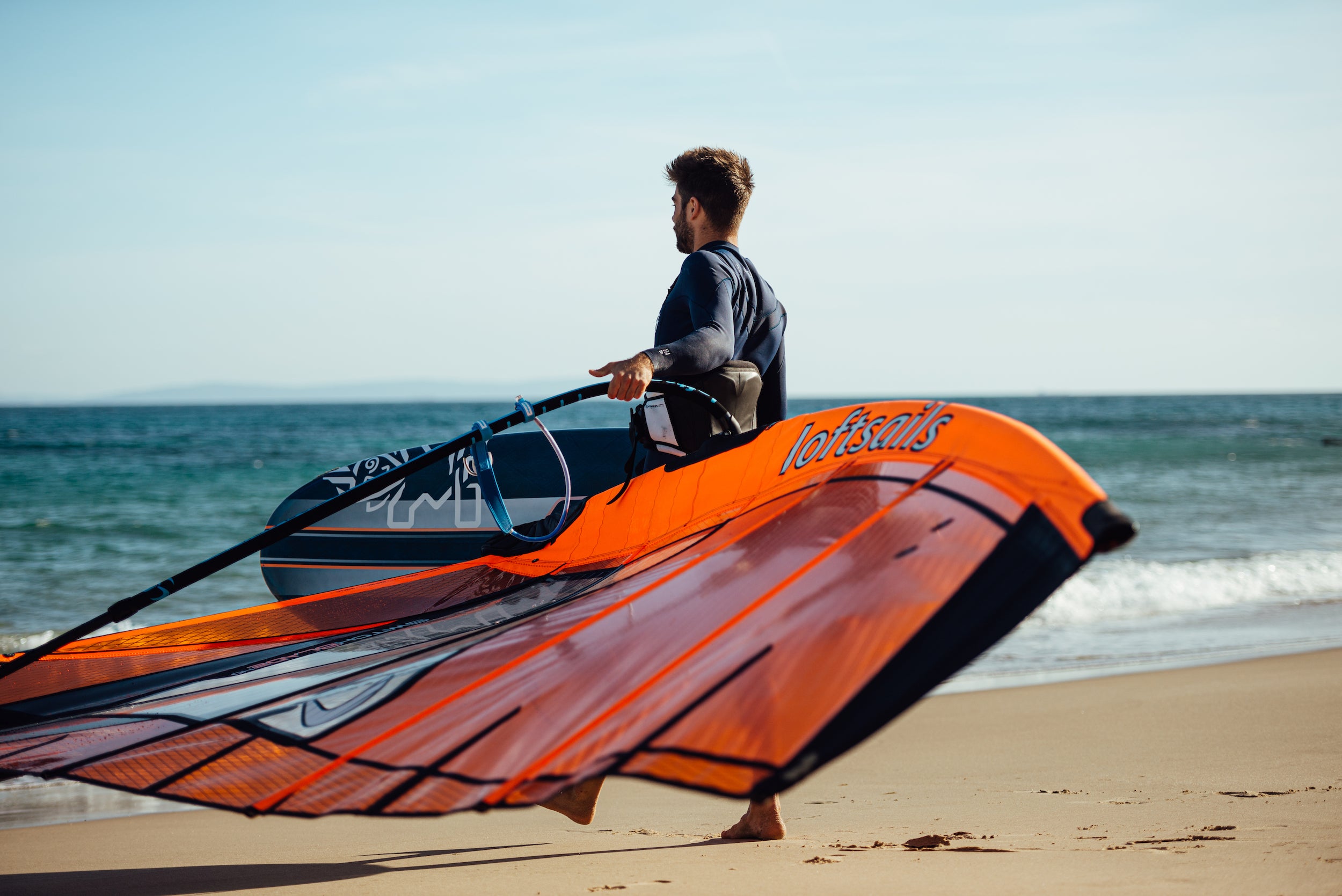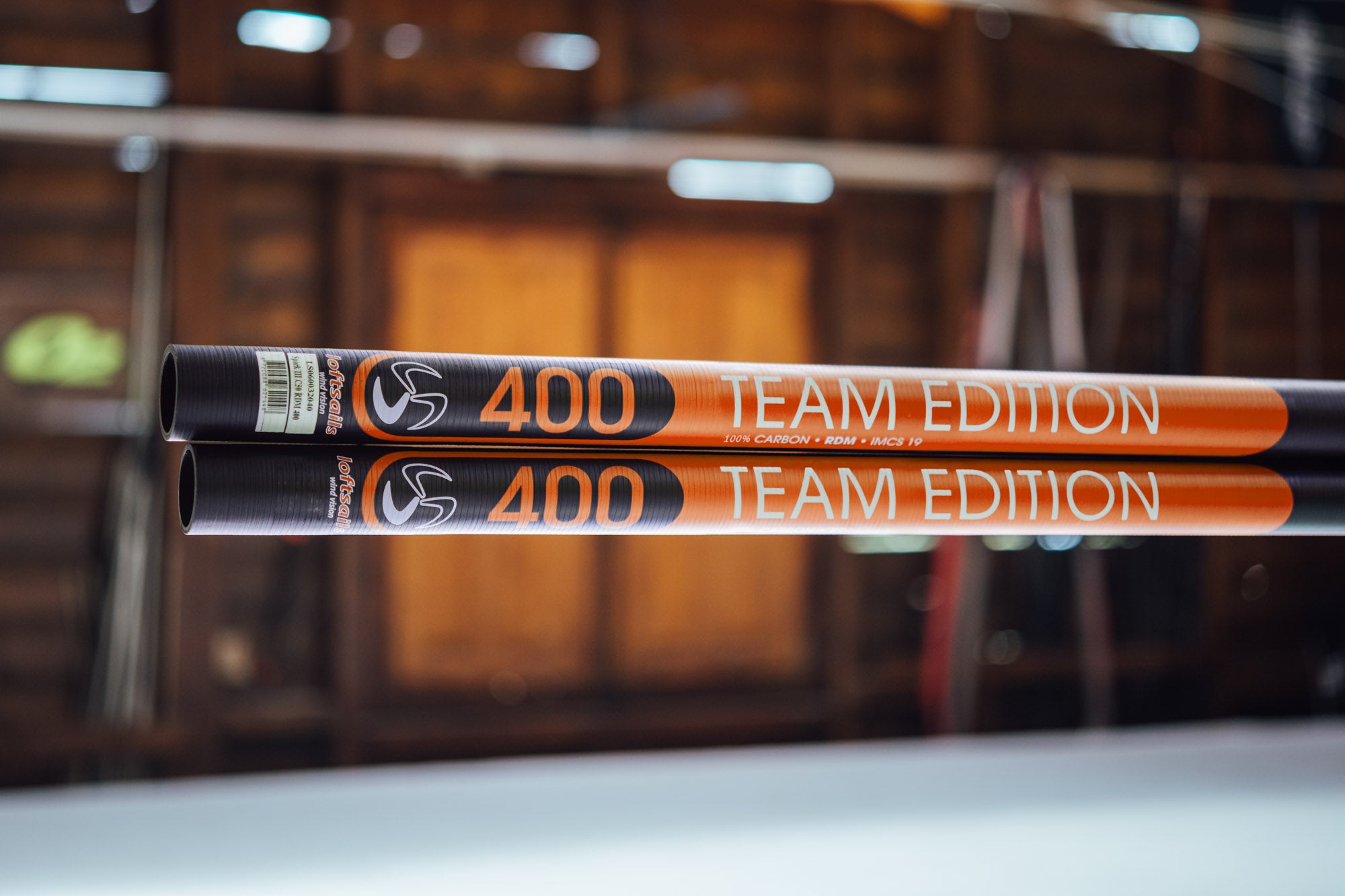
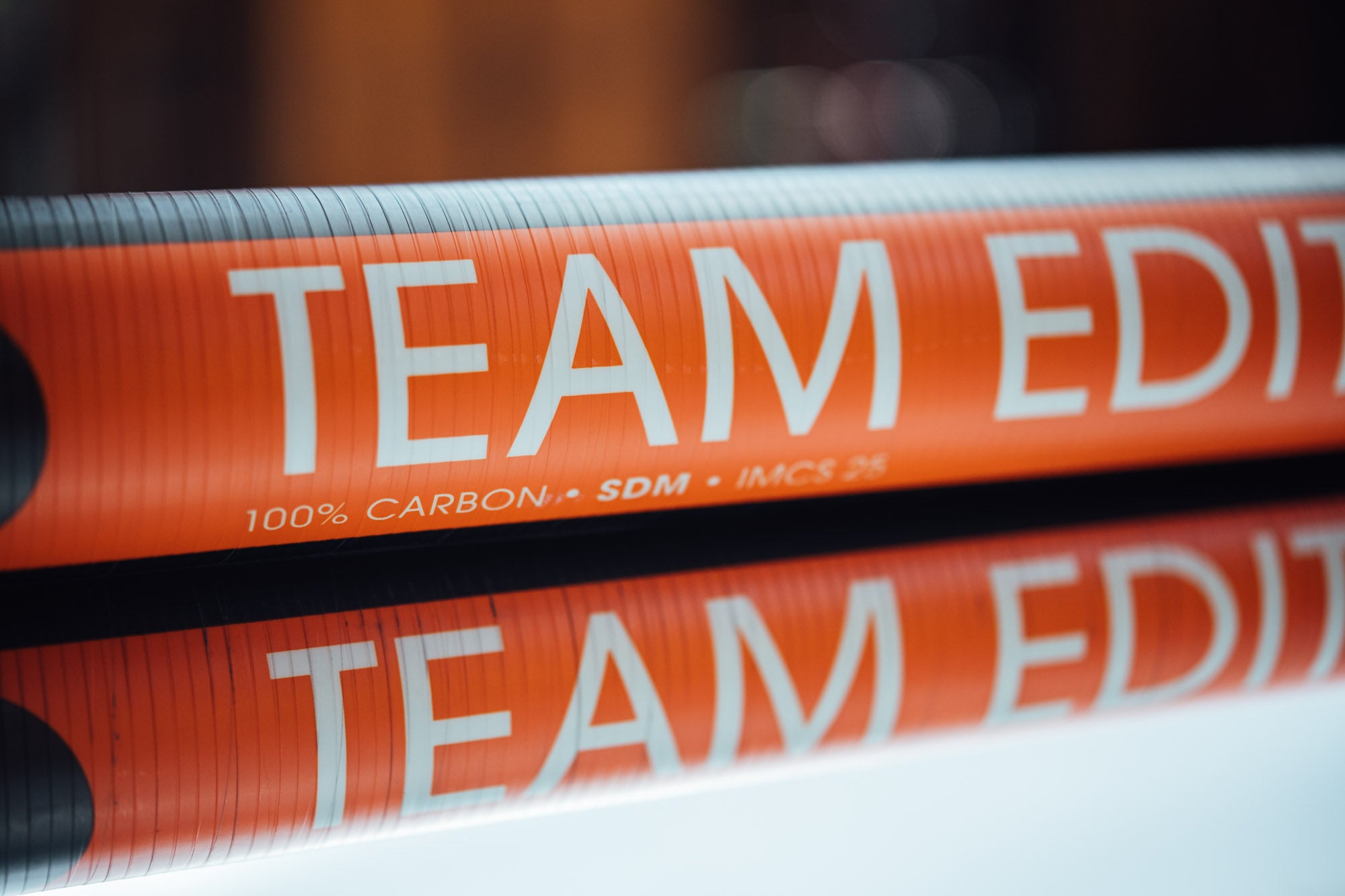
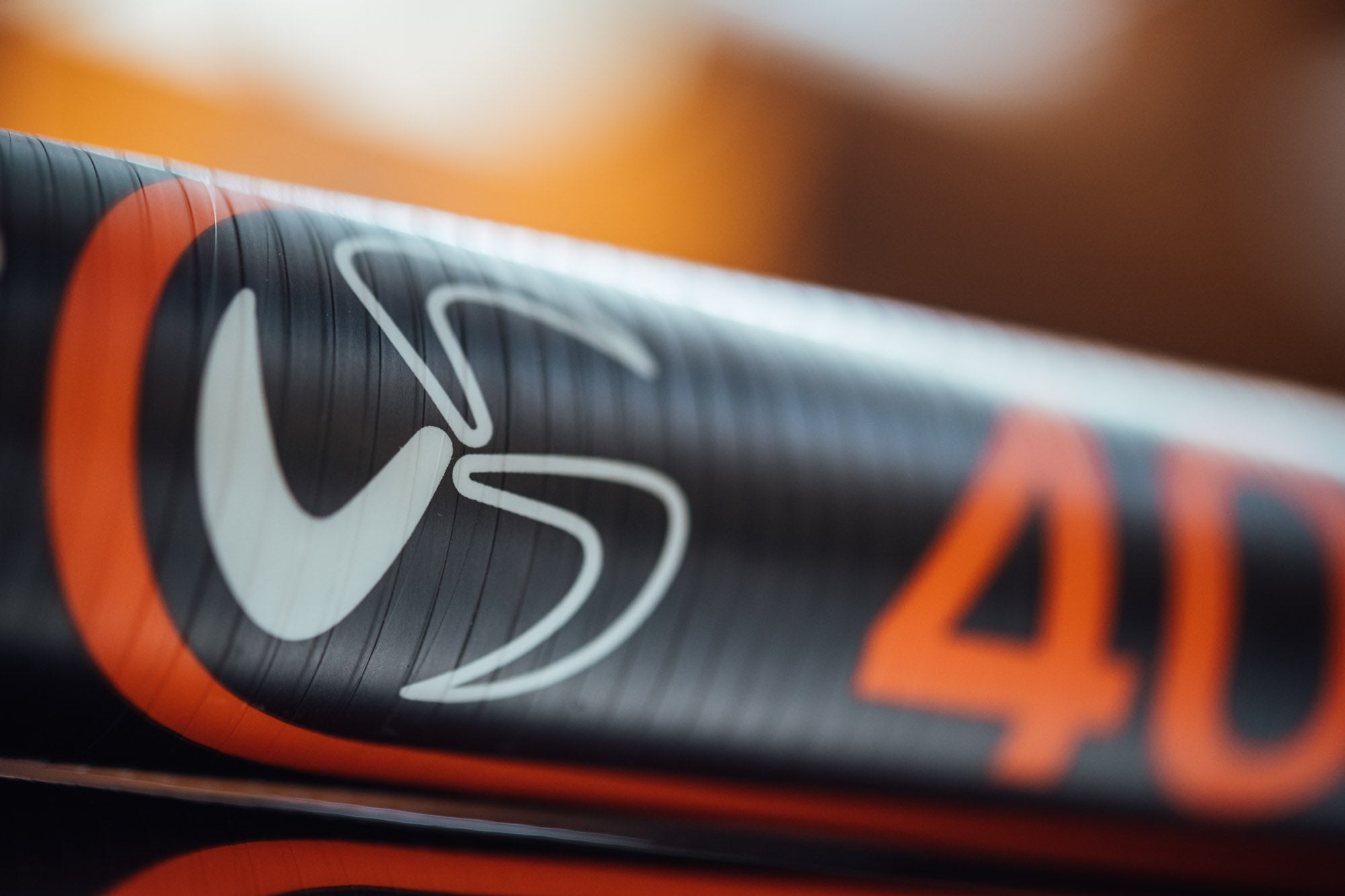
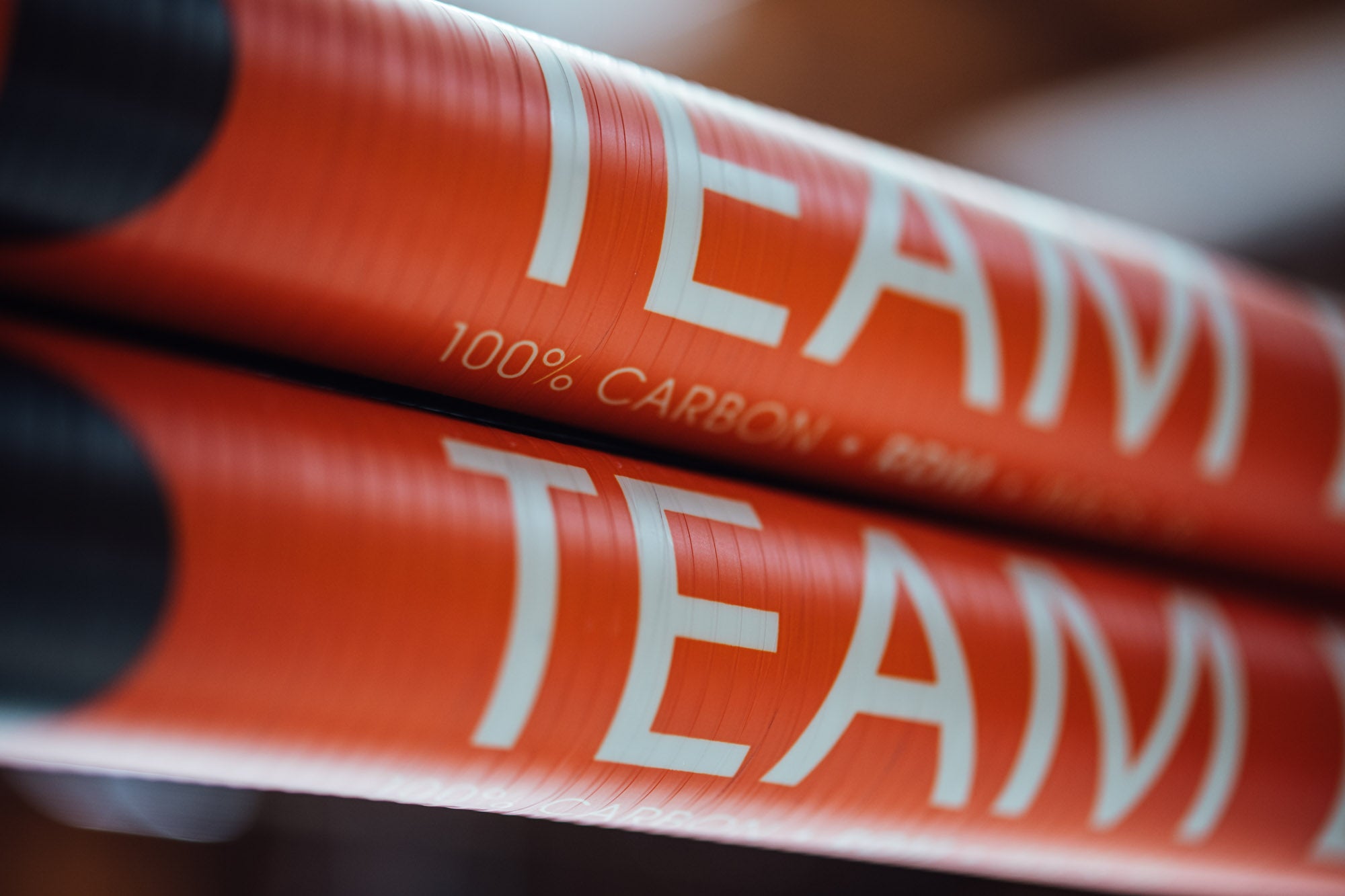
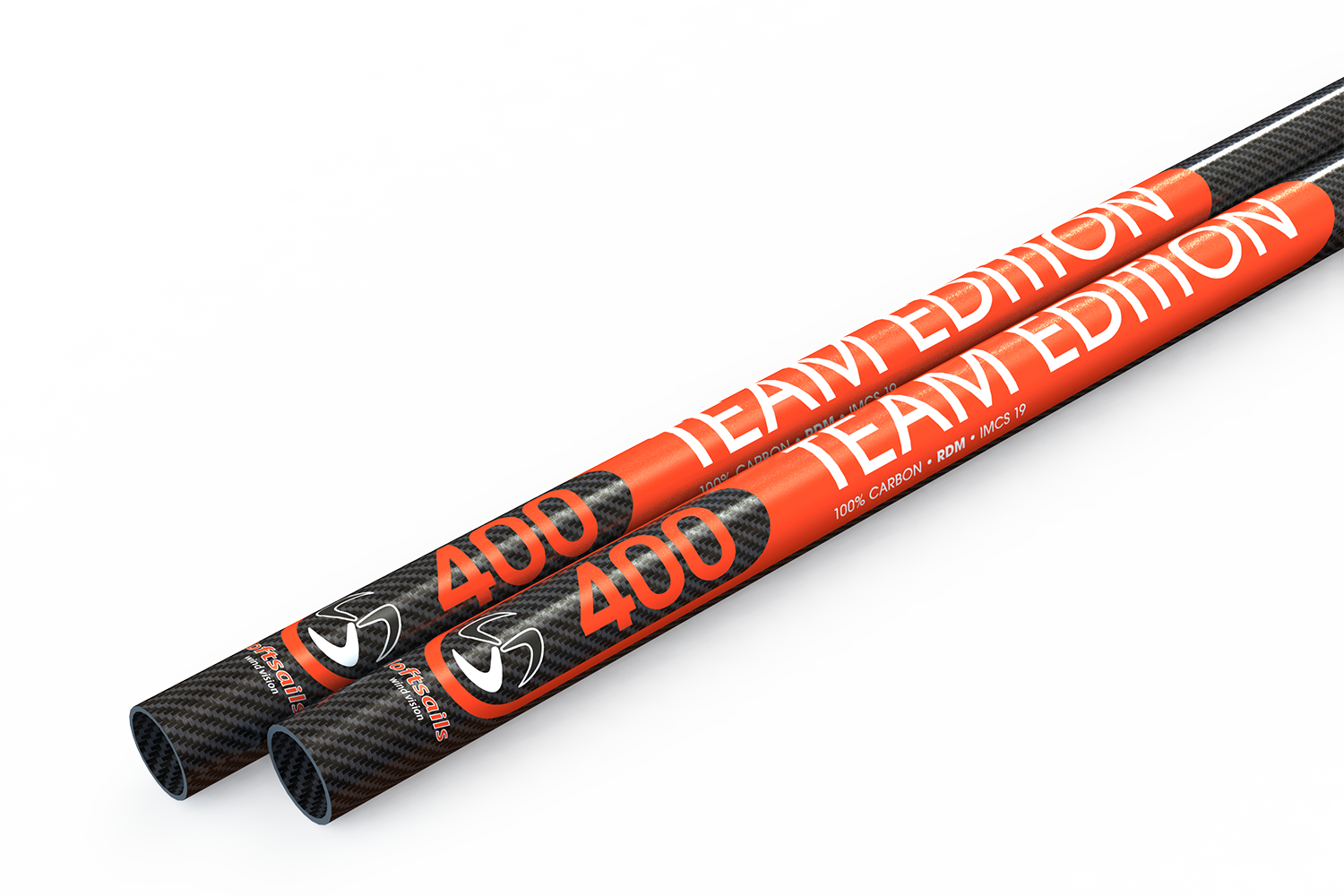
Team Edition III C100 RDM 340 With Mastbag
Loftsails Team Edition masts focus on achieving optimal response with minimal weight, while maintaining excellent durability.
In high-performance sails, reaction and reflex play a critical role. It is essential to have the pre-set and consistently replicated behaviour across all diameters and sizes of the mast program, which is crucial for complementing their test-winning sails.
Loftsails utilizes the best T700 and T800 carbon fibers and pre-preg methods (pre-impregnated with resin for superior quality compared to traditional wet layup processes). The autoclave-cured process ensures the highest standard of tensile strength, impact/friction protection, and responsive flex.






Team Edition III C100 RDM 340 With Mastbag
| Size | Operating Weight ( kg) | Carbon Fiber | Base % | Top % | Finishing | Stiffness IMCS |
|---|---|---|---|---|---|---|
| 340 cm | 1.25 | T700 & T800 | 64 | 76 | Standard Matte | 14 |
| 370 cm | 1.3 | T700 & T800 | 64 | 76 | Standard Matte | 17 |
| 400 cm | 1.5 | T700 & T800 | 64 | 76 | Standard Matte | 19 |
| 430 cm | 1.75 | T700 & T800 | 64 | 76 | Standard Matte | 21 |
| 460 cm | 1.95 | T700 & T800 | 64 | 76 | Standard Matte | 25 |
| 490 cm | 2.15 | T700 & T800 | 64 | 76 | Standard Matte | 29 |
| 520 cm | 2.55 | T700 & T800 | 64 | 76 | Standard Matte | 33 |
What are the key differences between RDM and SDM compatibility in Loftsails, especially for cambered sails?
RDM Masts
These have a smaller diameter with thicker walls, resulting in a softer, more elastic, and forgiving feel on the water. They are known for being very durable and resistant to snapping, making them ideal for wave sailing and rough conditions where the mast needs to flex considerably. For cambered sails, RDM masts facilitate easier and smoother rotation of the cams, which is beneficial for maneuvers like tacks and gybes. They are generally recommended for smaller sails, lighter riders, and those who prefer a more forgiving rig. Historically, Loftsails was one of the first brands to achieve World Cup and speed tour wins with RDM-compatible race sails when SDM was the norm for racing.
SDM Masts
These have a larger diameter with thinner walls, providing a crisper, more rigid, and direct feel. They maintain more profile definition in the sail when downhauled and are often preferred by bigger, more aggressive riders using larger sail sizes in flat water conditions, as they can handle more direct body weight pressure. While they might be perceived as less forgiving, they offer a powerful and direct connection to the rig, which some competitive sailors prefer for outright speed.

